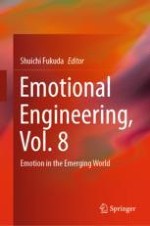2020 | OriginalPaper | Chapter
8. The Romantic Brain: Secure Attachment Activates the Brainstem Centers of Well-Being
Authors : Yoshiaki Kikuchi, Madoka Noriuchi
Published in: Emotional Engineering, Vol. 8
Publisher: Springer International Publishing
Activate our intelligent search to find suitable subject content or patents.
Select sections of text to find matching patents with Artificial Intelligence. powered by
Select sections of text to find additional relevant content using AI-assisted search. powered by
